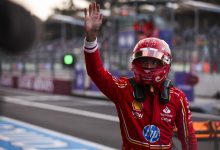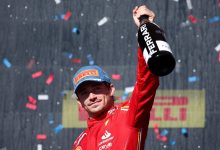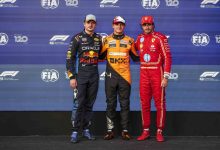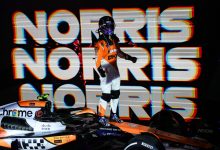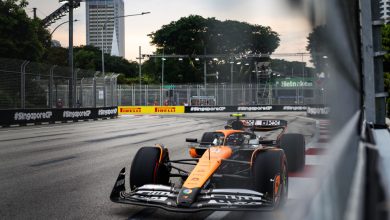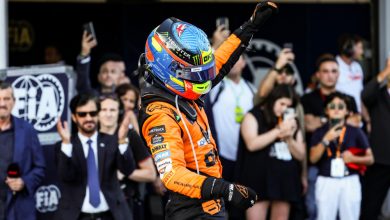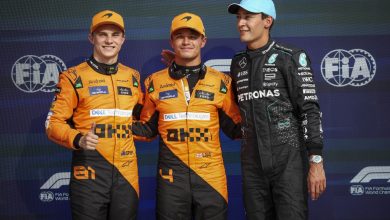Tyres to open up strategy at Korean Grand Prix: A view from Pirelli
Milan, 30 Sept 2013: Just like the previous race under the lights of Singapore, the P Zero White medium and P Zero Red supersoft compounds have been nominated for the Korean Grand Prix: but this is a circuit that is very different in character. Yeongam, close to Mokpo, to the south of the country, contains a bit of everything: from fast corners to slower and more technical sections. Having made its grand prix debut in 2010, the 5.615-kilometre track is run anti-clockwise which is no problem for the tyres, but is sometimes a source of strain the drivers’ neck muscles, a Pirelli press release said.
The Korea International Circuit is rarely used outside of the grand prix, so there is usually a high degree of track evolution over the course of the weekend. The combination of medium and supersoft, used for the fourth time this year, is designed to maximize speed in qualifying yet at the same time guarantee a high level of durability for the race, which offers plenty of opportunity for strategy.
Paul Hembery: “This year’s nomination represents a change from last season where we brought the soft and supersoft, as it best complements the characteristics of the 2013 range of compounds. We would expect there to be a significant difference in lap time between the two compounds we have selected, as was the case in Singapore, and that should help the teams to put together some interesting strategies. Korea is an interesting mix: you get some fast corners as well as some slower ones but actually it has the highest lateral energy demand of all the circuits where the supersoft is used, so tyre management is going to be important once more. In particular, the work done in free practice when it comes to assessing the wear and degradation levels on each compound with different fuel loads is going to be especially important, as that will hold the key to the correct strategy. We saw the difference that having the right strategy could make in Singapore, and although there is a lower probability of a safety car in Korea, this is still something that the teams will be paying a lot of attention to in the build-up to the grand prix, as the championship enters its final phase.”
Jean Alesi: “Korea is not a track that I have raced on myself, but I have heard many positive things about it from the drivers. This is encouraging, because when the modern generation of circuits first came in they were not universally popular but now it seems there is a different philosophy that ensures all the new tracks are real drivers’ circuits as well. What is interesting about this race is that the tyre nomination will be the same as Singapore, which was a very good race. We could see a big gap in lap times between the two compounds and some drivers were able to use this to their advantage to build a good strategy. The other thing that we saw was the consistency of the supersoft tyre: even though it is the softest tyre in the range it managed to complete quite long stints without any notable drop-off in performance, so I imagine that we will see the same in Korea.”
The circuit from a tyre point of view:
The most critical characteristics of this track from a tyre point of view are the high-speed corners and heavy braking areas, which allow the cars to use their maximum stopping power (or to be precise, deceleration) of 5.2g. With the weight transfer involved, this equates to the front tyres being subjected to a vertical force that is the equivalent of 900 kilogrammes.
As well as the braking, there are big lateral forces exerted on the tyres. Turns 7 to 8 for example involve a direction change at 270kph. This puts plenty of lateral energy through the loaded tyres, which peaks at 4.4g. The rapid direction changes demand maximum rigidity from the structure, which ensures steering precision and helps the driver to hold the ideal line.
Another crucial area is the slower sequence of corners from turns 15 to 17. The kerbs that the drivers use on the inside test the structure and mean that the road-holding from the outside tyre is critical: an issue that is dealt with by the high levels of mechanical grip generated by the supersoft tyre in particular.
Technical tyre notes:
The aerodynamic set-up adopted for Korea by the teams is quite similar to Japan, with medium to high levels of downforce. However, the traction demands are much higher than in Japan, so the teams use different engine maps to help put the power down out of the slow corners. The front-right tyre is worked hardest at the Korean track.
Graining can be an issue in Korea, particularly in the low-grip conditions at the start of the weekend. Graining is caused when the cars slide sideways too much, creating an uneven wave-like pattern of wear on the surface of the tread that affects performance.
The majority of drivers last year used a two-stop strategy, while only three tried a one-stop or a three-stop strategy. The top 10 qualifiers all started on the supersoft tyre, with Sebastian Vettel winning the race for Red Bull from second on the grid. Toro Rosso’s Jean-Eric Vergne was the highest-placed starter on the soft tyre from 16th, finishing the race in 8th position.
The tyre choices so far:
| PZero Red | PZero Yellow | PZero White | PZero Orange | |
| Australia | Supersoft | Medium | ||
| Malaysia | Medium | Hard | ||
| China | Soft | Medium | ||
| Bahrain | Medium | Hard | ||
| Spain | Medium | Hard | ||
| Monaco | Supersoft | Soft | ||
| Canada | Supersoft | Medium | ||
| Great Britain | Medium | Hard | ||
| Germany | Soft | Medium | ||
| Hungary | Soft | Medium | ||
| Belgium | Medium | Hard | ||
| Italy | Medium | Hard | ||
| Singapore | Supersoft | Medium | ||
| Korea | Supersoft | Medium |
Meet the Pirelli F1 Team: James Gresham, Logistics Manager
James started off life as an engineer – and that clearly shows through in his passion for all things mechanical. He went to university in Birmingham and then joined March Engineering, doing pretty much everything at some point from mechanic to stores manager, sales manager, team manager and project manager. He then moved into the tyre industry and has been with Pirelli ever since the company started its Formula One contract from 2011. As logistics manager, his job in short is to ensure that all the correct tyres are fitted to the correct car, and organise all the people and equipment that are necessary to ensure that this process takes place smoothly. “That’s essentially it, and it’s the same job no matter where we are in the world,” James points out. The Englishman is based at Pirelli’s motorsport hub in Didcot but it’s what he does outside of work that is truly remarkable. He owns a collection of old cars including a 1897 tricycle – typical of one of the very oldest racing machines in the world – and a 1901 De Dion Bouton, which was bought new by his grandfather in 1902. In the 1990s he was a six-time national sailing champion as well as a three-time winner of the prestigious Cowes Regatta, and he still tries to find time to do some sailing now. If that wasn’t enough, he also volunteers on a vintage railway in north Wales and he is currently helping to build a signal box. He’s certainly the man with the widest range of hobbies in Pirelli – and probably in the whole of Formula One…
ends
